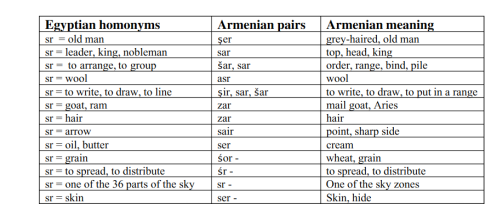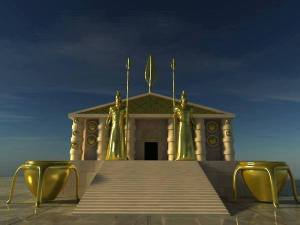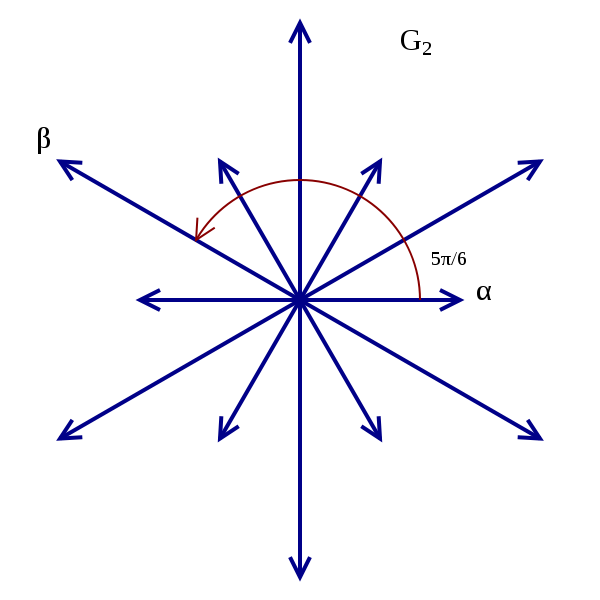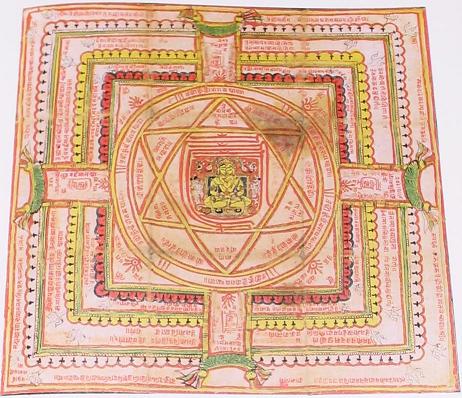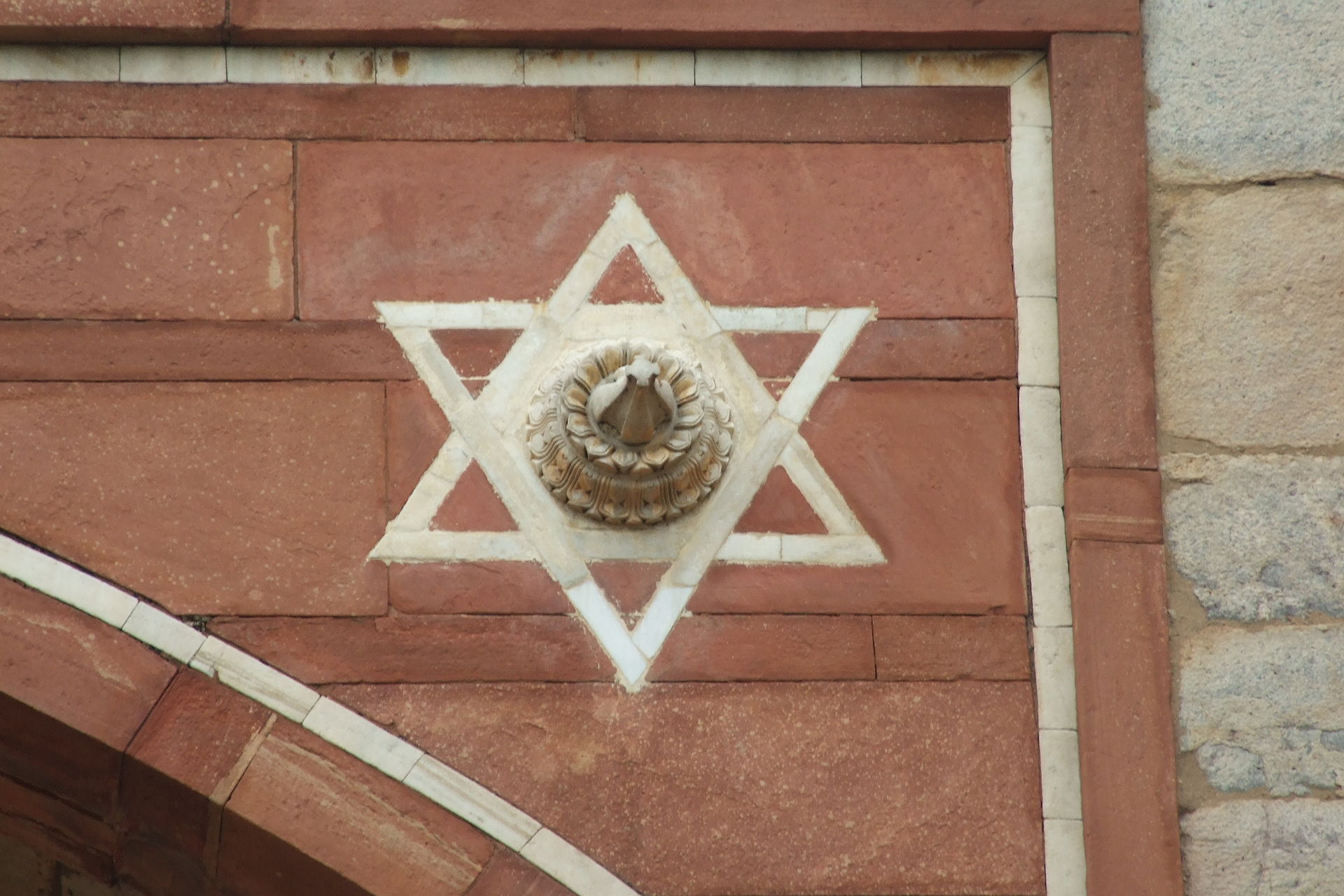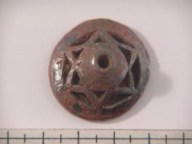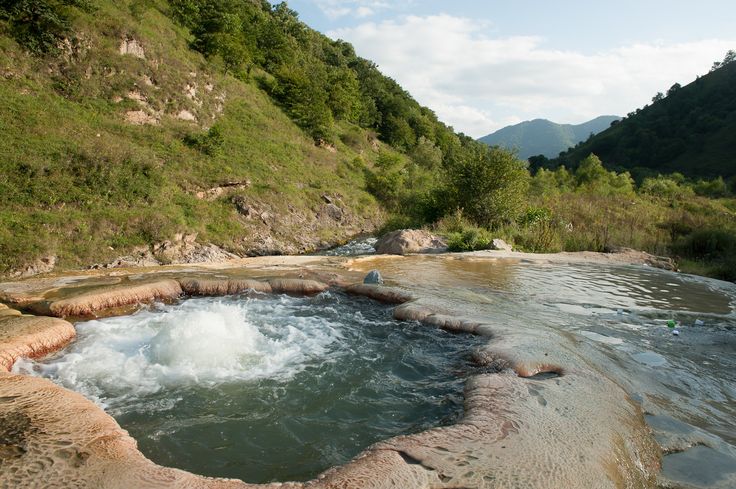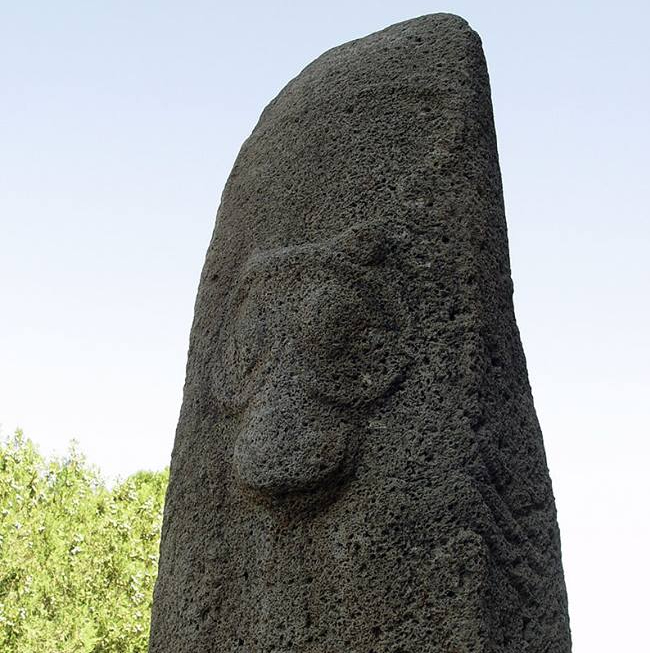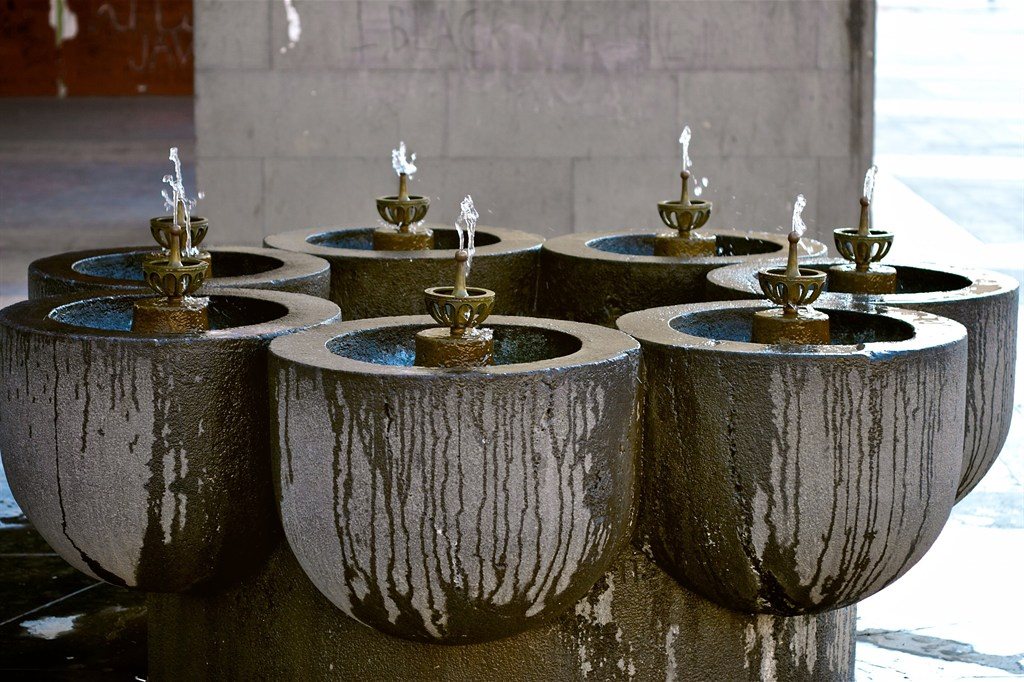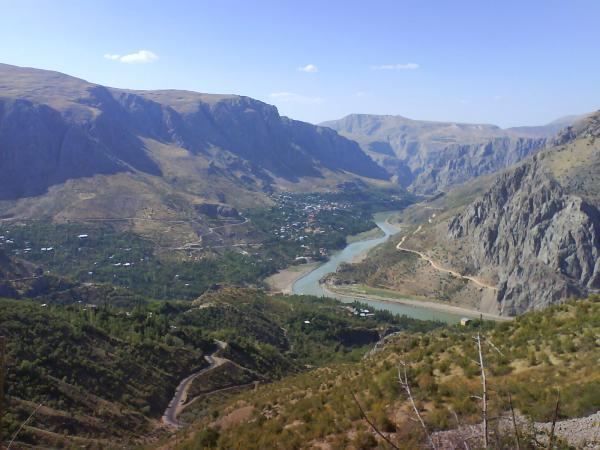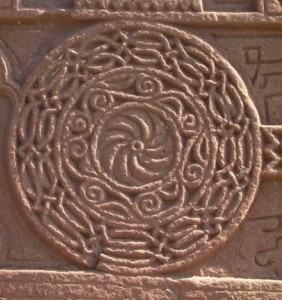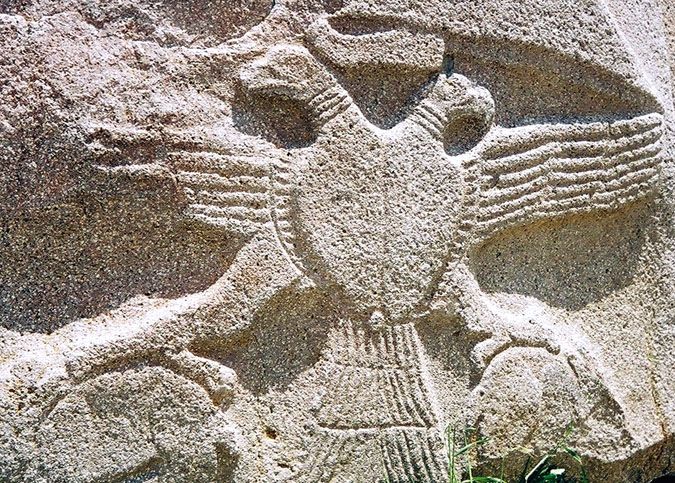The formation of the Mountainous Karabakh Republic, the consolidation and further enforcement of its statehood in the arduous periods of war and the heavy post-war times gave space for a number of questions. How could Azerbaijan constantly fail to assimilate, to appropriate that small piece of highland after 70 years of antiArmenian policy, after applying all the possible measures for persistent disturbance of the ethnical composition of Artsakh?
How could a handful of people stand up for the protection of their identity within the fierce regimes of the Soviet Union? Even when Azerbaijan largely used the military and political support of official Moscow to onset a war to suppress the struggle for selfdetermination, to exterminate Armenians from that area, it was forced to face a disgraceful failure. How was the victory wheedled from an enemy that was multiply superior in quantity? How was it possible to establish a new type of modern and internationally recognizable statehood in the condition of war and economic crisis?
The answers to these questions are useful not only in terms of history, but foreffective building over the existing achievements. The right answers will support the interested political powers in finding the way to regulate the situation, in correct understanding the essence of theKarabakh problem and in giving an equivalent solution. The right answers will be useful to the peoplewho are fighting for independence and who are on the way of establishing the new statehood.
First of all, it must be well understood that the mentioned issues have their own history. Both the military success and the political victories are closely related to it. Nothing new ever happened throughout that history, but everything rather developed in a natural flow of time. At all times,the threats to sovereignty and be lief have unified the people, the social and political powersof Armenia. That is how the victories of 1918 were gained in the battle ofSardarapat, against the superior Turkish forces, hence establishing the fundament for the restoration of the Armenian statehood. One of the persisting evidences of such unity was the triumph our people celebrated in the War for Artsakh.
The victories have historical and legal roots, which is evidenced in quite an interestingand valuable historical document. That is the Constitution of Vachagan the Pious, which was written in the land of Artsakh 1500 years agoand was perfectly maintained to reach our times. An introduction to that unique legal document, as well as to the circumstances in which it was written,inouropinion, will help in better understanding and evaluating the realities ofthe pastand,why not–the present. After long lasting wars, in 387ad., theArmenian Kingdom was divided between the Byzantine Empire and Persia. Thewestern part of the country was annexed to the Byzantine Empire and theeastern lands (including Artsakh) were given to Persia, where the Kingdom assuch was destroyed already in 428ad. It was reformed into a Marz (aprovincialdistrict); and in order to provide for the easiest way to manage that newadministrative unit, the Persianse liminated all the possible ways of reestablishing independence and removed the eastern states of ArmeniaArtsakh and Utiq, which had always been named as the “Eastern Side” orthe “Eastern World”. The latter were annexed to the Albanian tribes, ruled by Persia of the time and occupying a territory from the River Kura to theCaucasian mountain chain, hence combining an other province of Aghvank(known as the Caucasian Albania or Aluania).
Aghvank consisted of two irreconcilable parts, which was the main reason that the province did not ever become a single unified administrative unit. The North of the River Kura was inhabited by dozens of small tribes that lived separately from each other and had no common trade, language, culture or religion.
In contrast to this, the Eastern World of Armenia existed in common and purely shared cultural and religious values, and talked the same language.
Yet the Greek and Roman historians of the antique world wrote that Armeniawas separated from the Albanian tribes by River Kura. Due to the review of these sources of information, the so considered founder of Azerbaijani historical discipline Abbas Kuli Aga Bakikhanov wrote: “The Armenian border draws along the right bank of the River Kura, to the point where the River Araks flows into” (Гюлистан-Ирам, Баку, 1926, с. 8).
The areas to the North from the River Kura were populated by dozens of small tribes and were commonly known to the ancient historians as “Albania”, which means a country of mountains. It is worth noticing that these lands have the same name even today, as Dagestan is translated from the local language as “Country of Mountains”. Now these lands are inhabited by numerous different ethnic groups, as they were in the past. That break up was the main reason for the division of that region between the Soviet Russia and Azerbaijan, in 1920.
From the time of the collapse of the Soviet Union, the peoples that lived there have been striving for unification, especially about one million Lezghines that intend to unite with their second part, even after being assimilated under therule of Azerbaijan. The same 800 thousand people of Tallish struggle for their determination, and are severely suppressed by Azerbaijan, including theprohibitions of announcing any such ethnic definitions and naming everybody Azeri.
Coming back to the historical realities, the Southern part of the newly established Aghvanian state,i.e. the right bank of the River Kura, was at one time the Eastern border of Armenian Kingdom, with unified Armenian population that had common language, religion, shared historical and cultural values and practiced trade. Due to that unity, a small and partially independent kingdom was formed in that land under thePersian rule,in the 5th century,leadedby the Armenian dynasty of Aranshahik. The liberation movements and struggle of the second half of the 5th century contributed to the consolidation of that kingdom, in the result of which Persia was forced to alleviate its strict policy on Armenians, by signing the Treaty of Nvarsak.
Hence, the rights and freedom of the Armenian Marz were expanded; the traditionally established authorities of the Armenian ministers, to maintain armed forces and to collecttaxes, were completely restored. Naturally,those compromises were also addressed to the Aranshahik dynasty established in Eastern Side. An Armenianhistorian of the 5th century Movses Khorenatsi wrote that the dynasty came from Haik Nahapet. He also wrote that the Armenian Kingdom was established “զեզերբ հայկական խօսիցս” (Citation in old Armenian), which means in the area where people talked Armenian and marshals (leaders) were nominated from the generation of Haik Nahapet, to rule on the lands of the Kingdom. The North – Eastern part of Armenia stretched from the River Araks to the right bank of the River Kura, also embracing the Castle of Hnarakert, on the left bank of the Kura. Khorenatsi tells that the courageous and noble Aran was nominated to rule on those lands (Մովսէս Խորենացի, Պատմութիւն հայոց, գիրք երկրորդ գլուխ Ը).
The ministerial dynasty of Aran, which ruled the Armenian people of those lands for centuries, used the traditional rights of theirs and established that small Armenian Kingdom in the 5th century. Sometimes that Kingdom wasnamed after the newly established unit of territory–Aghvank, but it lived anddeveloped as an Armenian land, and with Armenia.
In order to avoid the confusion in the names of this Armenian region and the country of Albania on the left bank of Kura, the writers of the time always differentiated Armenian Aghvank and the main land of Albania. Forinstance, A.A. Tsagareli clearly separates the mainland of Albania, which stretched tothe North from River Kura, from the “Armenian Aghvank” (Грамоты и другие исторические документы 18-го столетия, относящиеся до Грузии, том 2, под ред. А. А. Цагарели) that lied to the South.
Numerous books, printed by the order of the Russian Emperor Alexander, observed the River Kura as the border between Armenia and Albania (Описание Кавказа с кратким историческим описанием Грузии, СПБ, 1805, с. 28.). The sources of information under the services provided to the Russian Tsars, permanently stated that the right banks of the River Kura were Armenian and were “…ruled by Armenians till the recent times”(Акты, собранные Кавказской Археографической комиссией. Под ред. Ад. Берже, том 6, часть1, 1874, с. 840). In his works, a Russian researcher Nikolay Frolovsky observed the existence of another ethnical group,except Armenians, on the left bank of theRiver Kura in the middle of the 19th century, and gave the following explanation: “Armenians have been the oldest inhabitants of these lands, and the tatars came from the other side of the Caspian Sea” (Обозрение российских владений за Кавказом, ч. 2, СПБ, 1836, с. 439).
It is worth mentioning that the newcomes , who had been accustomed to dry climate and deserts in the Eastern part of the Caspian Sea, discovered acompletely different climate and different nature in the Eastern World ofArmenia,rich in forests, a plenty of meadows and gardens. They named that land Karabagh, which in their language meant “A Big Orchard”,the same way asthey(presently)call the Karakum–A Big Sandor Kara boghaz gyol–A Deep Hollow Lake, etc. Hence Artsakh obtained its second name, as Karabagh (Gharabagh).
The history of Azerbaijan contains justified explanations of changes in the ethnical composition of the mentioned Armenian lands, on the right bank of the River Kura. One of the founders of the Azerbaijani historical discipline,Y.A.Pakhomov wrote that in the second half of the 18th century, long before the formation of khanates, a dynasty of beks ruled on those lands, and maintained their identity even during the khanates, though in parallel with the nominations of Turkish Tatar beks, from the leaders of the newcoming tribes: “In the futurethe heirs of Turkish tribe leaders or, more exactly,leaders of groups of tribes were envoyed by the Sefevian (Persian) Shahs to these lands and agreed to settle in the Transcaucasia from the 16th century”(Е. А. Пахомов, О земельно-сословном вопросе Азербайджана, Баку, 1926, сс. 1-2).
That process continued from the middle of the 18th century, when Persia formed a separate khanate in Artsakh. In order to enforce credible ruling onthose lands, Muslim nomadic leader of a Turkish tribe Panah was proclaimedthe khan of Artsakh. The khan himself always strived to establish firm social support that would help maintain his rule in those lands.
The historiographer of the khan wrote that the khan forcefully brought dozens of nomadic shepherds to settle in Shushi with their families, where his residence was (Мирза Адигезаль-бек, Карабах-наме, Баку, 1950, с. 50-59). These families had never resided on any land and became a disaster for the locals, asthey destroyed the cattlesheds and gardens, stole the cattle and robbed the farmers. One of the statesmen of the historiography of Azerbaijan, V.N.Leviatov showed what destructive consequences all of those processes had on the economy of the region in general (В. Н. Левиатов, Очерки истории Азербайджана в 18 в., Баку, 1948, с. 54-55).
That policy brought to changes in the ethnical composition throughout the region, nevertheless, according to another known Azeri historian, Gasi Abdulayev: “Armenian feudal Meliks continued to rule in the mountainous parts of Karabakh”(Г. Абдуллаев, “Азербайджан в 18 веке и взаимоотношения его с Россией”, Баку, 1965, с. 25).
The existence of that small Kingdom in the Eastern World of Armenia was the first to be thoroughly studied by a known orientalist S.V.Yushkov, based on the writing of Movses Kaghankatvatsi “History of Aghvank” and othersources. In order to avoid any confusion or misperception of the historical source of information, Yushkov stressed that the Kingdom mentioned in the “History of Aghvank” was on the territory of Ancient Armenia and was the “fragment” of once powerful Armenian State (К вопросу о границах древней Албании. Исторические записки АН СССр, том 1, Москва, 1937, с. 137).
It is worth mentioning that Movses Kaghankatvatsi presents the Albanian tribes as “savage” and their rulers as “evil” (Book 1, Chapter 11). It means that the author of the “History of Aghvank” describes the Albanian tribes as strange and hostile.
It must be recalled at this part of the discussion that the correct knowledge ofgeographical locations and ethnic names is important for proper understandingof the historical realities. Related scientific works have been carried out in Azerbaijan, in the first years of formation of that country. Before the 1930s the core population of Azerbaijan was comprised of Udi people, Tatars, Tats, Tallish, Lezghines, Avars, Caucasian Turks, Kurds and Persians, including Armenians and Russians, as well as other ethnic groups. Starting from 1930s, all the Muslim ethnic groups were called Azeries, in the name of the newly established state.It is interesting that the same people who called themselves “Azerbaijani”, in routine named themselves simply Muslims, which means thatthe selfperception of “Azerbaijani” did not exist in practice.
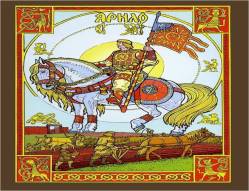 Jarilo (Polish: Jaryło; Template: Lang-slo; Croatian: Jura or Juraj; Serbian: Đurilo; Slavic: Jarovit), alternatively Yarilo, Iarilo, or Gerovit, was a Slavic god of vegetation, fertility and springtime.
Jarilo (Polish: Jaryło; Template: Lang-slo; Croatian: Jura or Juraj; Serbian: Đurilo; Slavic: Jarovit), alternatively Yarilo, Iarilo, or Gerovit, was a Slavic god of vegetation, fertility and springtime. 

